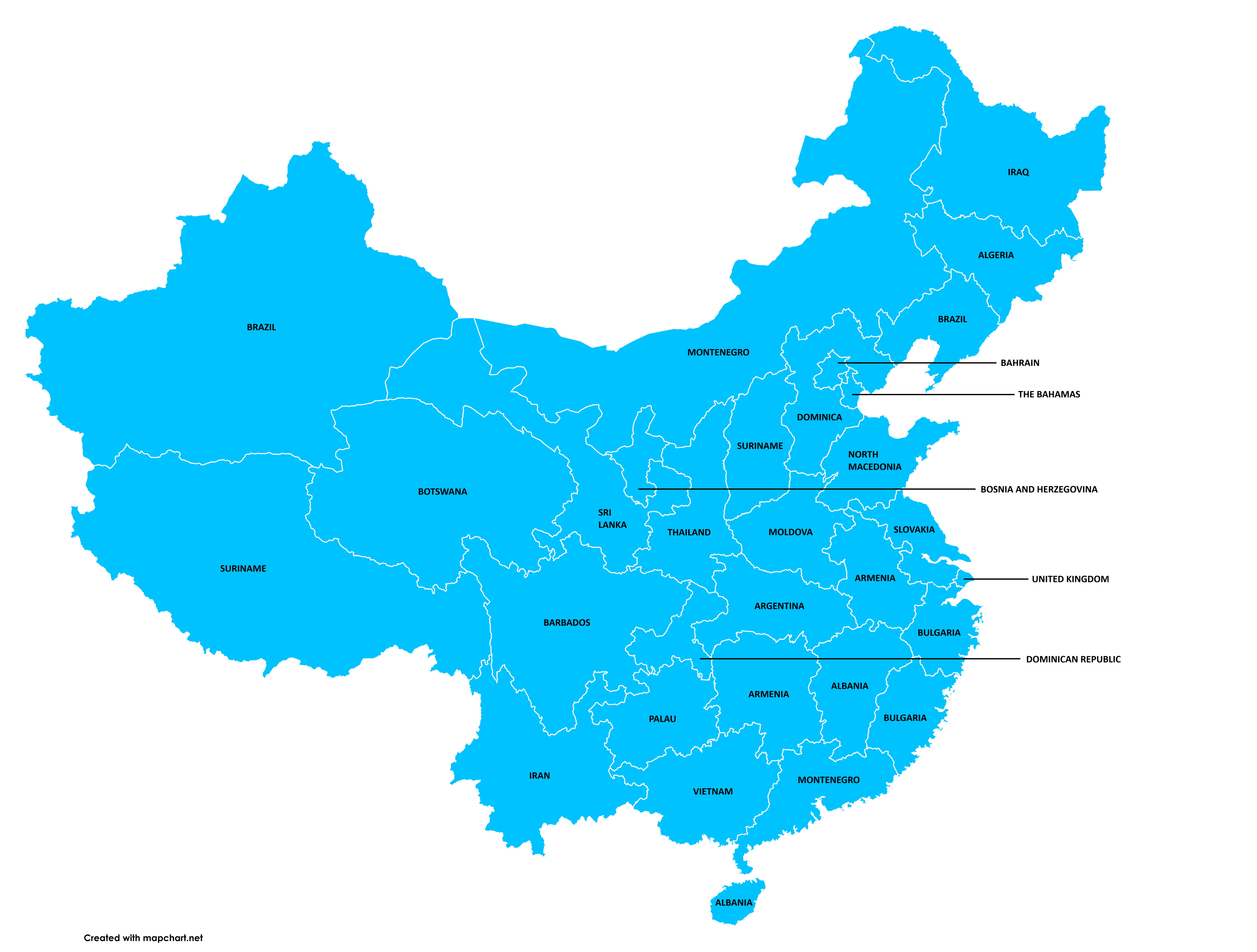GDP Per Capita by Chinese Provinces Map


Marcus Rodriguez
Historical Geography Expert
Marcus Rodriguez specializes in historical cartography and geographic data analysis. With a background in both history and geography, he brings unique...
Geographic Analysis
What This Map Shows
The visualization titled "Chinese Provinces Compared to Countries by GDP (PPP) Per Capita" provides a fascinating overview of how the economic output per person in various provinces of China stacks up against the GDP (Purchasing Power Parity) per capita of countries around the world. This map effectively highlights the economic disparities not only between different regions of China but also in comparison to other nations, showcasing the complexities of China's economic landscape.
Deep Dive into GDP (PPP) Per Capita
To understand the importance of GDP (PPP) per capita, it's essential to grasp what the term means. GDP (PPP) per capita is an economic measure that considers the total economic output of a region divided by its population, adjusted for price level differences across countries. In simpler terms, it reflects how much each individual would earn if the entire economic output were evenly distributed.
Interestingly, GDP (PPP) per capita allows for better cross-country comparisons than nominal GDP, as it accounts for the varying costs of living and inflation rates between nations. This means that when we look at China's provinces through this lens, we can see a more nuanced picture of economic well-being and living standards.
China's rapid economic growth over the past few decades has led to significant regional differences in wealth. Coastal provinces like Guangdong and Jiangsu typically show much higher GDP (PPP) per capita figures compared to their inland counterparts. For instance, Guangdong province, home to major cities such as Shenzhen and Guangzhou, has a GDP (PPP) per capita that rivals that of many developed countries, reflecting its status as a manufacturing and technology hub.
On the other hand, provinces in the interior regions, such as Gansu and Guizhou, often report much lower GDP (PPP) per capita, which can be attributed to factors such as lower industrial development, limited access to markets, and less investment in infrastructure.
This disparity raises interesting questions about economic policy and regional development strategies in China. While the eastern provinces continue to thrive, the Chinese government has been implementing initiatives aimed at boosting growth in less developed regions. However, bridging the economic gap remains a formidable challenge.
Regional Analysis
When examining the map closely, we can categorize Chinese provinces into several economic tiers based on their GDP (PPP) per capita. For instance, the top tier includes provinces like Beijing, Shanghai, and Shenzhen, where GDP (PPP) per capita can exceed $20,000. These areas are characterized by advanced service sectors, significant foreign investment, and high levels of urbanization.
In contrast, the middle tier includes provinces such as Zhejiang and Fujian, with GDP (PPP) per capita ranging from $10,000 to $20,000. These provinces benefit from a mix of light manufacturing and export-oriented industries, contributing to their relative wealth.
The lower tier is dominated by provinces like Qinghai and Tibet, where GDP (PPP) per capita is often below $10,000. The challenges in these regions include geographical barriers, lower educational attainment, and limited economic diversification. Interestingly, despite the lower GDP figures, these provinces often have rich cultural heritages and natural resources, which, if harnessed properly, could lead to sustainable economic growth.
Significance and Impact
Understanding GDP (PPP) per capita in the context of Chinese provinces is vital for several reasons. Firstly, it sheds light on the economic disparities that exist within China, highlighting the need for targeted policies to promote balanced regional development. Moreover, the implications of these economic differences extend beyond mere statistics; they affect migration patterns, social stability, and public policy decisions.
As China's economy evolves, the importance of sustainable development becomes increasingly apparent. Areas that are lagging behind economically face challenges such as unemployment and lower standards of living. The Chinese government has recognized the significance of these issues and is focusing on initiatives to improve infrastructure, education, and healthcare in these regions.
Looking ahead, the future of China's provinces concerning GDP (PPP) per capita holds significant implications for both domestic and global economies. As provinces strive to enhance their economic status, they will likely attract more investment, leading to increased competition and innovation. Ever wondered what this means for global markets? As China's provinces diversify and grow, they could reshape not only the regional economy but also influence worldwide economic trends.
In conclusion, the map of Chinese provinces compared to countries by GDP (PPP) per capita serves as a crucial tool for understanding the economic landscape of China. By delving into the data, we can gain insights into regional disparities, economic policies, and the significant impact these factors have on the lives of millions of people. The journey toward economic equality is ongoing, and examining these figures helps us appreciate the complexities involved in achieving sustainable growth across diverse regions.
Visualization Details
- Published
- September 19, 2025
- Views
- 98
Comments
Loading comments...